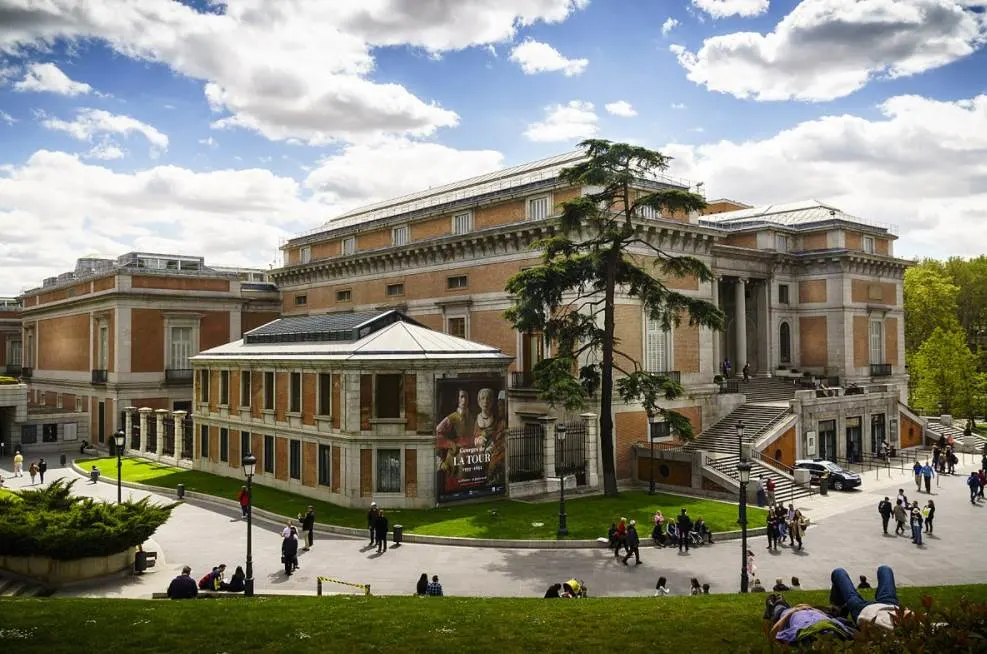Most of Diego Velázquez’s paintings were commissioned by King Phillip IV of Spain. He was the main patron of the Baroque artist after he arrived in Madrid from his home city of Seville in southern Spain.
He was allowed to visit Italy to both learn from the great Italian masters and buy some paintings to join the king’s extensive collection at the Royal Alcazar in Madrid. He produced some fascinating works of art during this period as well.
Let’s take a closer look at some of the most interesting facts about Apollo in the Forge of Vulcan by Diego Velázquez (1599-1660), an intriguing work of art by one of the most famous Spanish artists in history.
1. It was completed during the artist’s first visit to Italy
Very little is known about the whereabouts of Diego Velázquez during his first trip to Italy in the late 1620s. We do know that the trip was sponsored by King Phillip IV and that it marked a crucial phase in the development of the artist’s mastery.
He painted the portrait of Maria Anna of Spain in Naples in 1630 and presumably visited the Italian cities of Venice, Ferrara, Cento, Loreto, Bologna, and Rome.
It’s possible that he met fellow Spanish artist Jusepe de Ribera (1591-1652), a man who worked in Rome and who was heavily influenced by the paintings of Caravaggio and his extreme chiaroscuro style.
Art historians generally agree that he painted Apollo in the Forge of Vulcan, a work also referred to as “Vulcan’s Forge,” in the year 1630.
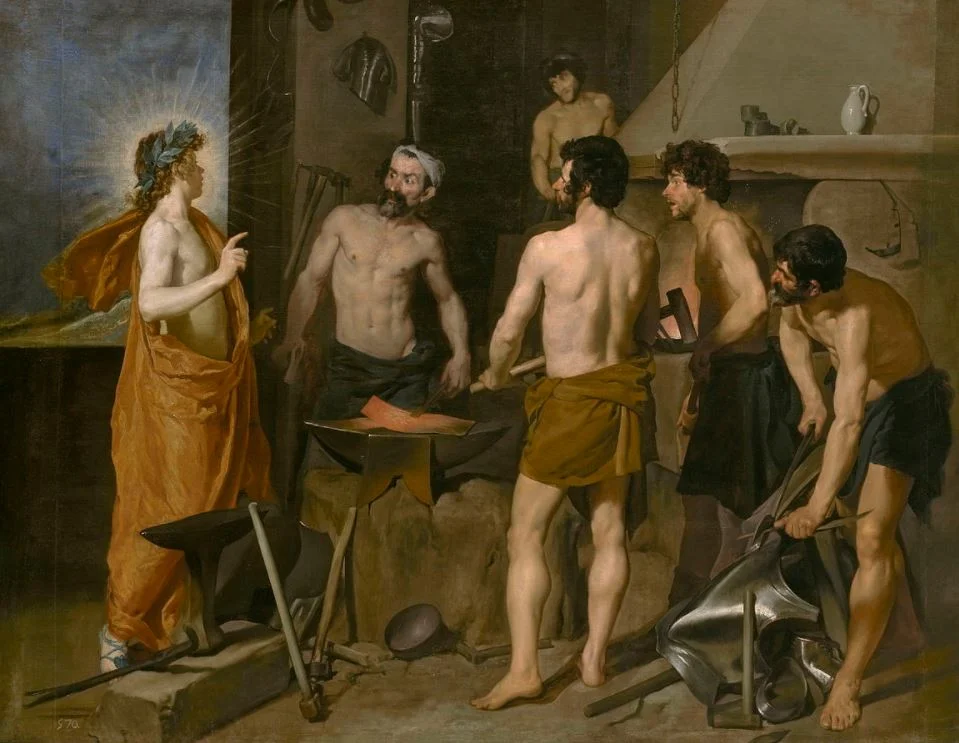
2. It was painted at the request of a famous Flemish artist
An important note about Apollo in the Forge of Vulcan and the trip of the Spanish artist to Italy was that he initially planned to visit the country together with famous Flemish artist and diplomat Peter Paul Rubens (1577-1640).
Rubens had been on a diplomatic mission to Spain between 1628 and 1629 and the renowned Baroque artist and the young court painter of King Phillip IV got along extremely well. The two friends even made plans to visit Italy together the following year.

The trip never happened for Rubens because he was called for another diplomatic mission, this time in England, and Velázquez visited Italy without him. The two discussed painting this particular work while they were working at the Spanish court in 1629.
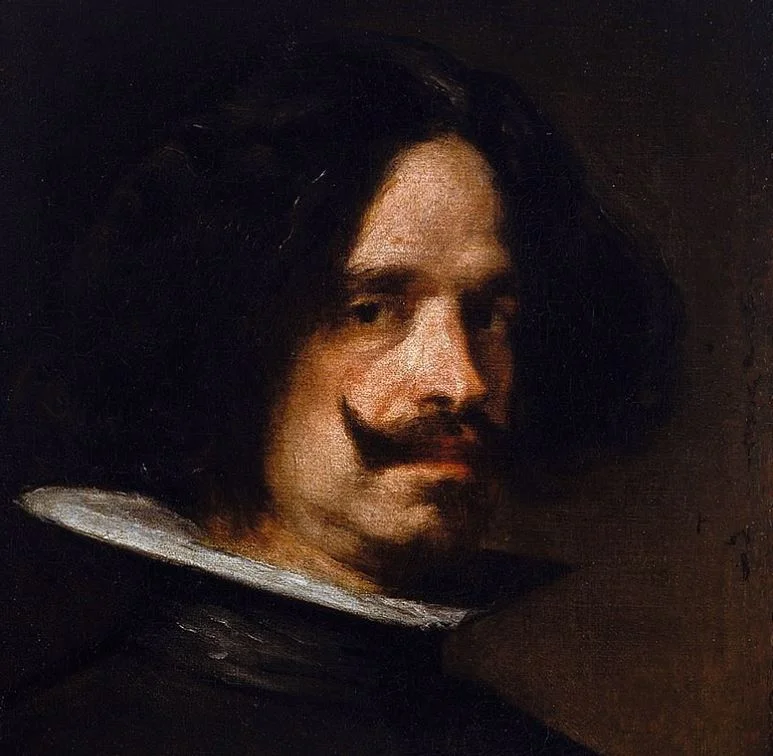
3. It depicts a shocking moment mentioned in Ovid’s “Metamorphoses”
The painting depicts a story from Roman mythology that is mentioned in Roman poet Ovid’s most famous work called “Metamorphoses.” It features 15 books and 250 myths, including this one featuring Apollo and Vulcan.
We can recognize Apollo by the laurel crown he is wearing and Vulcan is a regular man working in a forge. It depicts the moment that Apollo reveals that Vulcan’s wife, Venus, is having an affair with Mars, the Roman god of war.
This comes as a true shock for Vulcan and his helpers, something we can see on the faces of the men. Not only because of the affair but also because they are working on weapons for Mars that very moment.

4. Velázquez was influenced by a number of famous Italian artists
We don’t know which paintings Velázquez saw during his first trip to Italy and all the artists he met during his stay in the country as well. We can only guess based on the works he produced in Italy and the ones shortly after he returned to Spain.
The muscular bodies of the men indicated that he was influenced by the works of Michelangelo, one of the most renowned Renaissance artists who made painting and sculpting muscular men his trademark.
The use of color indicates an influence from the artists of the Venetian School, especially the paintings by Titian. This was also the artist that he already closely studied in Madrid together with Rubens. Multiple paintings by the Italian artist were already in the Spanish Royal Collection.
5. The artist depicted a common scene with regular people
We must remember that Velázquez had only been a painter at the Spanish court for less than a decade. This means that he was still working on developing his style without losing touch with his origins in Seville, his home city in southern Spain.
This initial period in his career resulted in several so-called bodegones, scenes of ordinary people depicting ordinary tools. Some of the most prominent examples are “The Wateseller of Seville” and “Old Woman Frying Eggs,” both paintings that feature an extreme level of realism.
Vulcan’s Forge is similar in the sense that he painted it as a regular workspace of a blacksmith in 17th-century Spain. The figures are completely unidealized as in most Italian paintings and the tools were painted with a similar level of realism as in the works he produced in Seville.
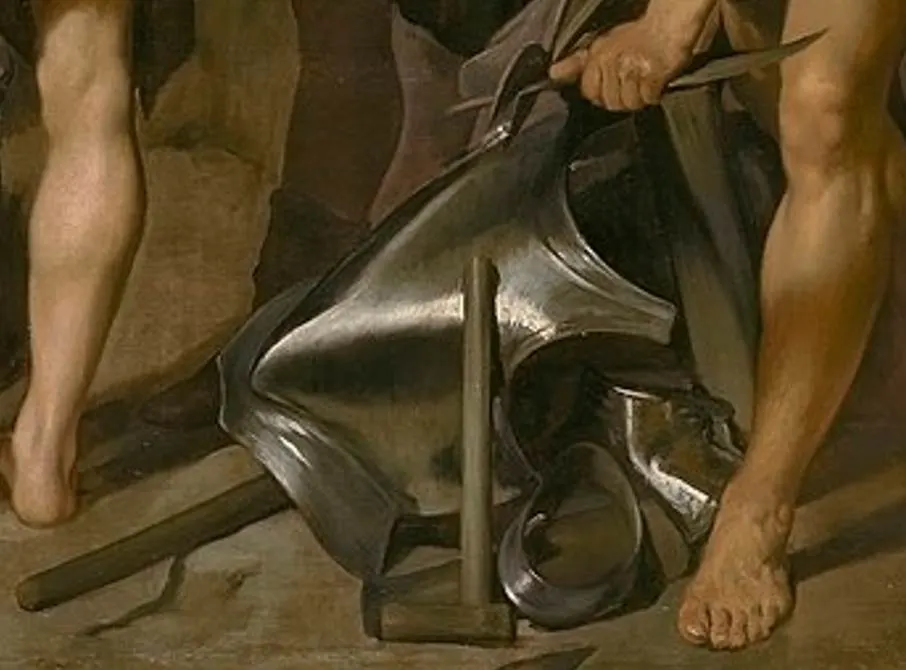
6. There’s a similar work he painted during his first trip to Italy
The painting marked a great step forward in the development of achieving depth in his works. That’s one of the main reasons why Apollo in the Forge of Vulcan is considered to be the most important work by Velázquez during this period.
The painting is also defined by the natural interaction between the figures, something the artist didn’t manage to achieve up until this point in his career.
One of the most remarkable facts about Vulcan’s Forge is that it was probably intended to be a companion of another painting called “Joseph’s Tunic.” This painting is also referred to as “Joseph`s Bloody Coat Brought to Jacob” and is similar in size and composition and was painted around the same time in Italy.
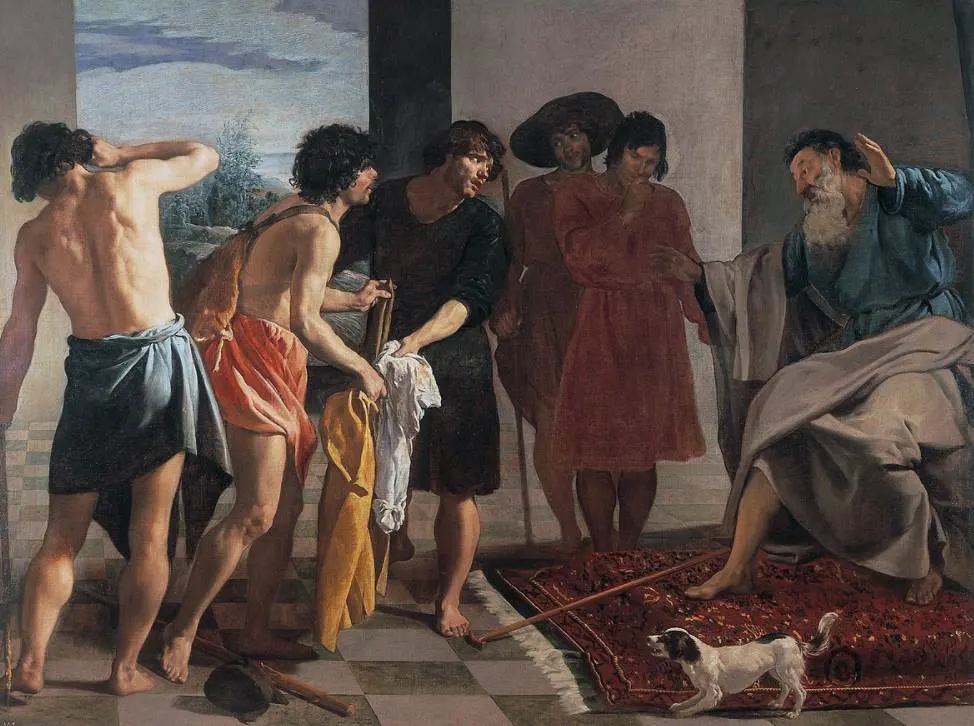
7. How big is Apollo at the Forge of Vulcan by Diego Velázquez?
The theory that both paintings called Apollo in the Forge of Vulcan and Joseph’s Tunic were meant to accompany each other is made strong because of both the content and the fact that they are similar in size.
The painting featuring Apollo and Vulcan is slightly larger however with dimensions of 223 × 290 centimeters (87 × 114 inches) while Joseph’s Tunic has dimensions of 223 × 250 centimeters (88 × 98 inches).
8. Where is the painting located today?
Although the painting wasn’t commissioned by King Phillip IV of Spain, it was still acquired by him rather quickly. It was first mentioned in 1634, about 4 years after the artist came back from Italy, mentioning that it was bought by the king to decorate the Buen Retiro Palace.
This palace was demolished after the Napoleonic Wars in the early 19th century and was transformed into the El Retiro Park on the eastern edge of the center of Madrid.
This means that the painting didn’t move that far because it became part of the collection of the Prado Museum in Madrid in 1819, the most famous museum in Spain located just west of the El Retiro Park.
